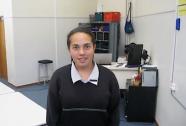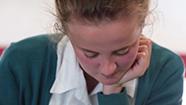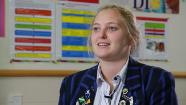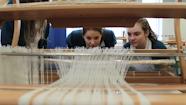Excelling in electronics
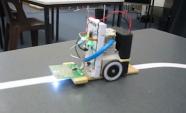 Introduction
Introduction

Students Allyn Daniel and Frances Bouter have excelled in electronics in year 11 at Te Awamutu College. Neither of them had made it one of their first subject choices nor had they participated in an electronics course before. However, they are now hooked on electronics and both plan to continue with the subject.
Te Awamutu College has just started offering electronics in year 10. Teacher Dave Smith has specific electronic concepts he covers at each year level and he uses the electronics subject specialist achievement standards for assessment within the programmes.
Projects
Teacher Dave Smith says the car park barrier arm and the line-following robot projects are great hands-on ways of getting students enthused about solving problems in electronics.
Car park barrier arm
Allyn and Frances have each produced an electronic model of a car park barrier arm. The barrier arm must open a servo controller arm when a car presses a switch and then close once the car has gone through. In addition, an LED must light up at night time.
Allyn's video of her car park barrier arm
Line-following robot
Both Allyn and Francis are working on a line-following robot. The line-following robot must follow a white line using LEDs and stop at the end of the line.
Allyn's video of her line-following robot
Video evidence
Creating videos is a useful way of collecting evidence. Dave notes that videos can allow students to be themselves and they often explain their work and understandings better orally than in writing.
The video complements the e-portfolio as evidence of theoretical knowledge. And it can jog a student's memory into giving more evidence when the model is actually working in front of them. From an assessment point of view, it's clear evidence that the project meets the brief and specifications and the achievement standard.
Dave Smith
What have Allyn and Frances found engaging in electronics?
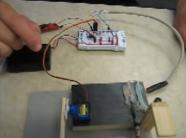 Allyn
Allyn

Allyn has particularly enjoyed “tinkering around with things and getting them going.” Learning how to solder and how the connections work in a picaxe system on a breadboard were aspects that stood out for her.
Allyn says she did find the programming very confusing at the start but it became easier and easier once she got the hang of it. She defines coding in electronics as "writing a program on the computer and then downloading it through a cable to the picaxe to make the components do what you want them to do."
Allyn is taking English, mathematics, science, graphics and design, and electronics. She has found that her learning in other subjects supports electronics. Science has helped Allyn understand some of the concepts of electronics – science has helped with understanding some of the concepts of electricity, mathematics assists with calculation, and English supports the writing she needs to do to describe her practice.
Frances
Frances says she enjoys the logic of electronics and feels like she “gets it”. She has also been able to help her Dad a little in his work – he is an electrician.
Coding has really engaged Frances.
It requires some thinking, but it’s pretty cool to have something do what you want it to.
Frances Bouter
Frances is studying graphics and design, photography, general science, English, and mathematics.
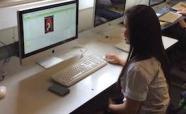 Related resource
Related resource

Captivated by coding
Year 12 student Michelle Arthars says she is now "addicted to Java".
Related videos
Providing girls with role models for computer science careers (03:00)
Students are informed and inspired by digital technologies professionals sharing insights into their jobs.
A year 13 student talks about her career pathways (00:55)
A student shares about combining her interests in law and food technology.
Koha and collaboration in textiles (04:23)
Massey University students worked with high school students in a client-designer relationship.

